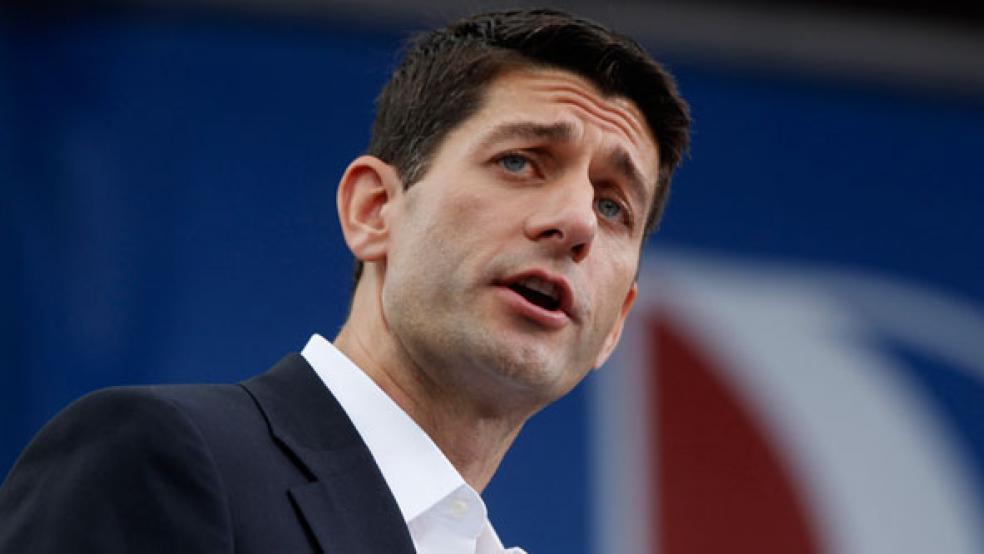It’s put up or shut up time for House Speaker Paul Ryan (WI) and his fellow Republicans to offer their take on the sprawling federal budget.
The day lawmakers adjourned for a for a weeklong recess, Ryan reportedly laid out three options for the chamber’s Republican Conference; they could put forward a blueprint that adheres to the topline set by the two-year budget deal reached last September; they could propose a plan that cuts spending by returning to last year’s sequester levels; or, they could just give up all together.
Related: Why Paul Ryan's Budget Deal Could Go Down in Flames
He then sent them home and gave them a week to mull it over.
All three options are perilous for Ryan, a former Budget Committee chair, and his vision of offering the country a forward-looking, conservative alternative to Democratic prescriptions in a presidential election year.
Sticking to the budget deal, the route Ryan has advocated could rile up two camps within the House GOP. The first is the House Freedom Caucus, a clan of around 40 lawmakers who want to shave at least $30 billion off the dollar amount set by the spending agreement.
“We need to write a budget that reflects the environment we’re in,” Freedom Caucus Chairman Jim Jordan (R-OH) said earlier this month, referring to the U.S. national debt hitting $19 trillion and a Congressional Budget Office report that said the deficit will climb in 2016 for the first time in seven years.
Related: Tea Party Revolts Against Obama’s Budget as Debt Exceeds $19 Trillion
Ryan has made several personal overtures to the Freedom Caucus, cognizant that the group’s bitter spats helped drive his predecessor, John Boehner, from office last year.
Sticking with a static figure could also ruffle the feathers of GOP defense hawks, who want to see the Defense Department’s Overseas Contingency Operations (OCO) account, also known as the war fund, pumped up by at least $20 billion.
A budget at a lower number would infuriate moderate Republicans, who would view the move as the party going back on its word with the White House. A slimmer budget would also face major hurdles in the Senate, where GOP leaders don’t want to rock the boat during an election year in which their majority is at stake.
A pared-down roadmap would die in the upper chamber, forcing the GOP to turn to the Democrats to pass the legislation, which they would alter further to push their priorities.
Related: As National Debt Hits $19 Trillion, a Spending Showdown Looms in Congress
Congressional budgets don’t have the rule of law, but they do act as a fiscal blueprint that lays out in detail the majority party’s spending priorities for the year. If Ryan can’t bring the various flanks of his party together, he’ll be forced to ignore a major messaging opportunity for 2016 and suffer the first loss of his young speakership.
Failure to build a budget would also likely scrap the appropriations and lead to a catchall Omnibus spending bill in the fall, something that is anathema to many House Republicans and could spark a fresh round of fierce, intraparty arguments.
The path should become clear after the House Republican Conference meets this week, and Ryan could be as surprised as anyone with the choice his members make.





